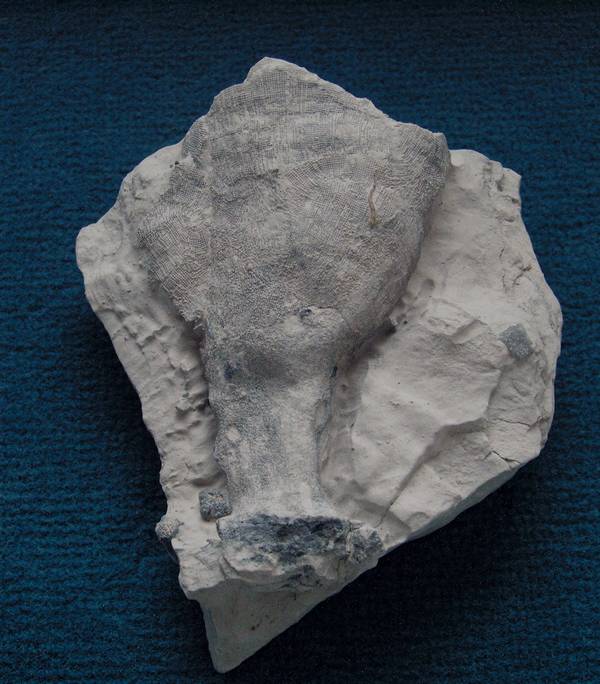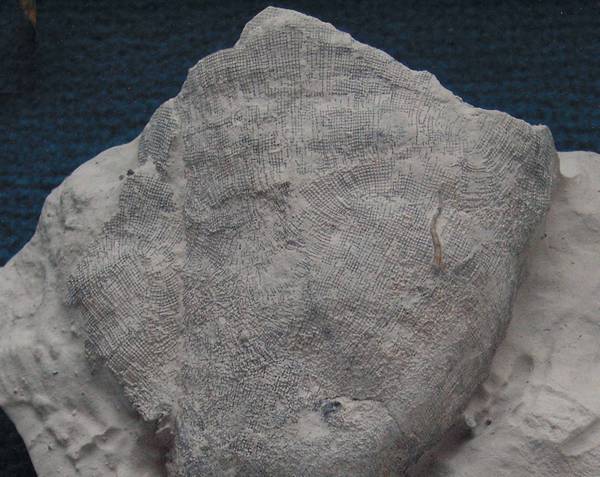

Pleurothyris sp.
Schrammen (1912) established the new family Pleurothyrisidae and the new genus Pleurothyris with the two species Pleurothyris tortuosa and Pleurothyris folium, based on three specimens of each kind. All specimens were from Oberg near Ilsede, North Germany. It appears that Schrammen's study material consisted of basal parts only, essentially the stems. The specimen recovered from the Teutonia quarry near Misburg recently has large parts of the basket preserved, thus giving a more complete impression of the sponge. In fact, Schrammen's figures and descriptions do not permit a clearcut assignment of the new specimen to any of the two species, an the author has some doubts that the distinction of two species is valid.
The new specimen has a short (30 mm) and strong stem with some relics of lateral roots. The stem is flattened (scabbard-like), with several pariertal oscula (each 5 mm wide) along its narrow sides.
The basket is thin-walled (1 mm) and goblet-shaped. Since there is no cortical layer developed, the dermal surface shows very nicely the longitudinal and circumferencial dictyonal strands (see enlarged picture). A few irregular strings of silica are the only surface features present. The dictyonal skeleton consists of a highly regular framework with fairly large (0.45 mm) cubic meshes. No pores, epirhyses or aporhyses developed externally.